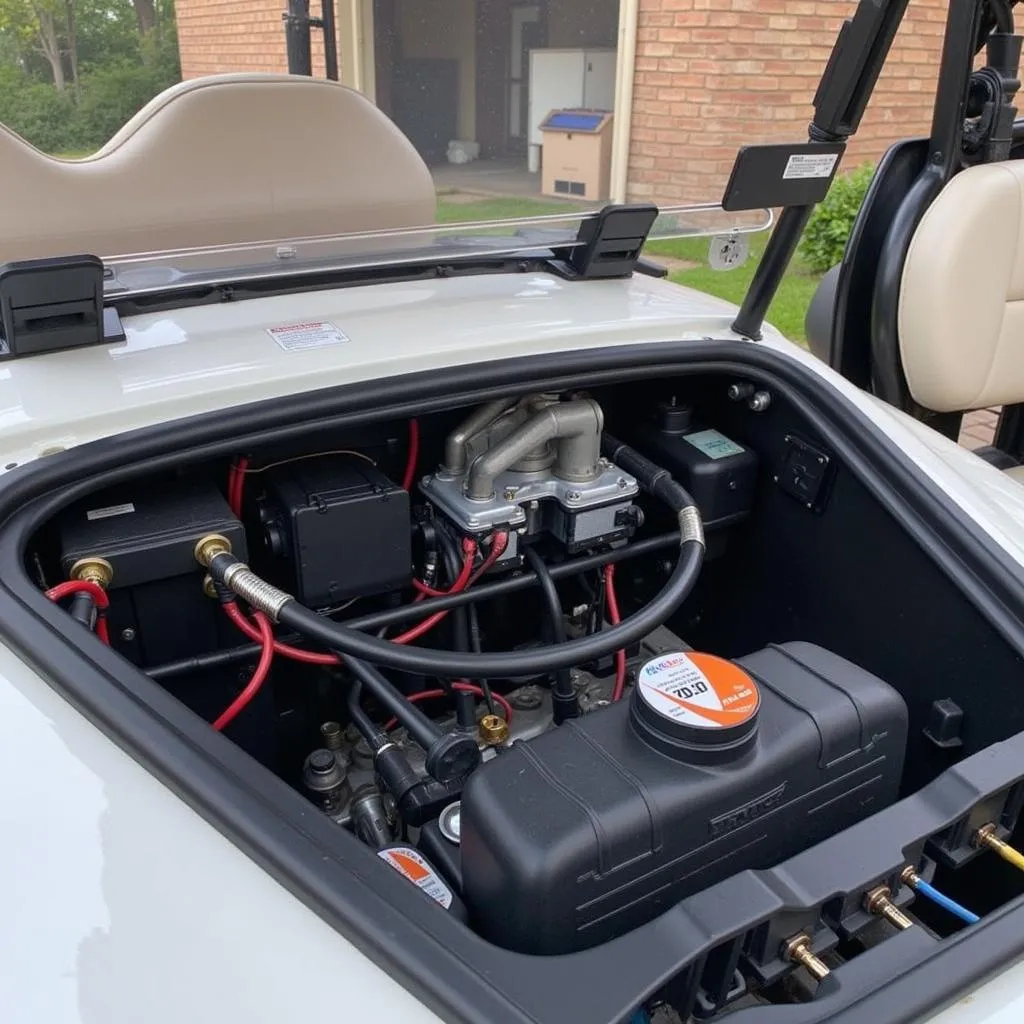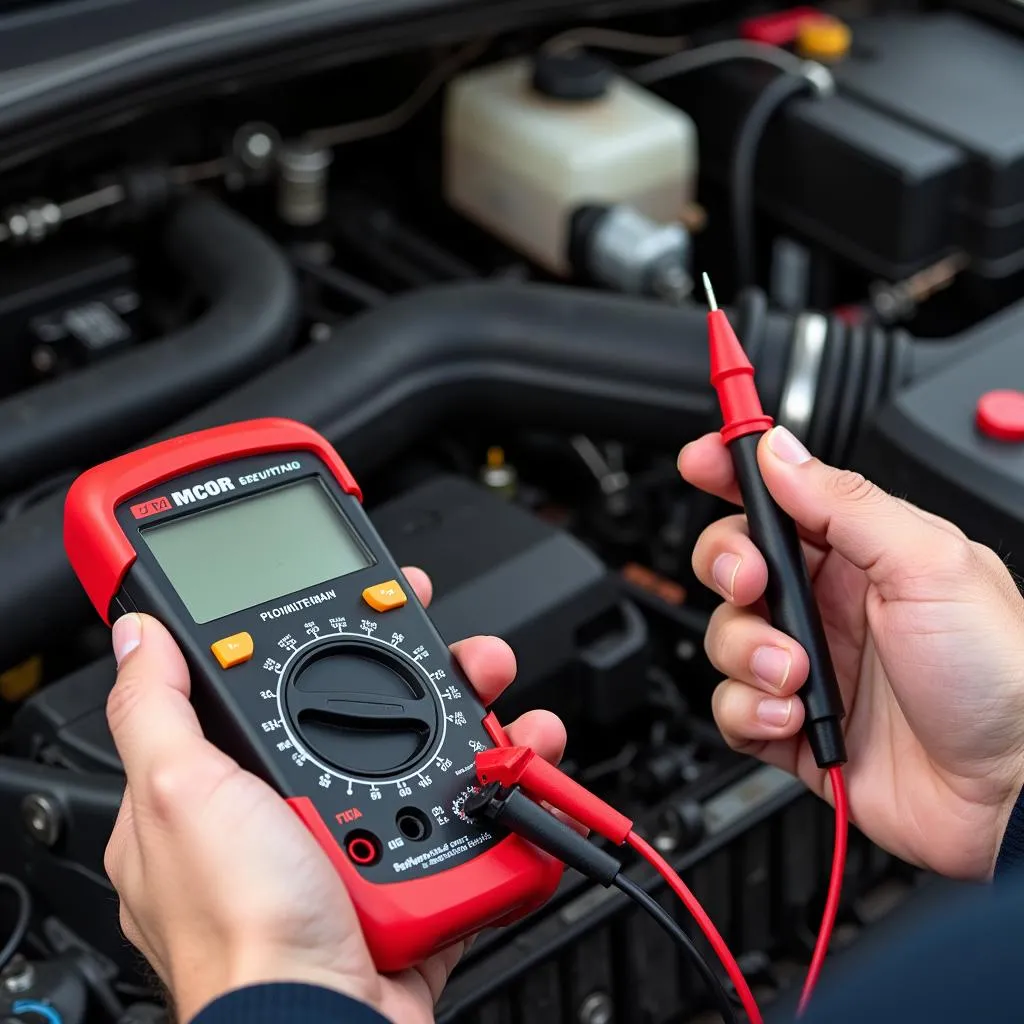Club Car Bad MCOR Symptoms: A Comprehensive Guide
A malfunctioning MCOR (Motor Controller Output Regulator) can cause a range of issues in your Club Car golf cart, turning a leisurely ride into a frustrating experience. This article will delve deep into the common Club Car Bad Mcor Symptoms, helping you diagnose the problem and explore potential solutions.
Understanding the Role of the MCOR
The MCOR acts as the brain of your Club Car’s electric motor. It translates the pressure applied to the accelerator pedal into electrical signals, dictating the speed of the vehicle. When functioning correctly, the MCOR ensures a smooth and controlled acceleration.
Common Club Car Bad MCOR Symptoms
Here are some telltale signs that your Club Car’s MCOR might be failing:
- Jerky Acceleration: Instead of a smooth increase in speed, a faulty MCOR can cause the cart to jolt forward or hesitate when you press the accelerator.
- Slow Speed or Loss of Power: If your Club Car struggles to reach its usual top speed or feels sluggish, a bad MCOR might be restricting the power delivery to the motor.
- Intermittent Operation: Your cart might run fine for a while, then suddenly lose power or behave erratically. This inconsistency is a classic sign of an MCOR on its way out.
- Cart Won’t Move: In some cases, a completely failed MCOR will prevent the cart from moving at all, even with a fully charged battery.
 Club Car MCOR Location
Club Car MCOR Location
Diagnosing a Bad MCOR
While the symptoms above point towards a possible MCOR problem, it’s crucial to rule out other potential culprits before jumping to conclusions. Here are some steps to help you diagnose the issue:
- Check Battery Voltage: Ensure your Club Car’s battery is fully charged. A low battery can mimic the symptoms of a bad MCOR.
- Inspect Wiring and Connections: Look for any loose or corroded wires connected to the MCOR and the accelerator pedal.
- Test the MCOR: Using a multimeter, you can test the resistance across the MCOR’s terminals while pressing the accelerator pedal. Inconsistent readings often indicate a faulty unit.
 Testing Club Car MCOR
Testing Club Car MCOR
Replacing the MCOR
If your diagnosis points to a faulty MCOR, replacement is the most effective solution. Thankfully, replacing the MCOR is a relatively straightforward process:
- Disconnect the Battery: Safety first! Disconnect the negative battery terminal before working on any electrical components.
- Locate and Remove the Old MCOR: The MCOR is usually located near the accelerator pedal assembly.
- Install the New MCOR: Connect the wires to the new MCOR in the same order as they were connected to the old one.
- Reconnect the Battery and Test: After reconnecting the battery, turn on the cart and test the acceleration.
 Installing Club Car MCOR
Installing Club Car MCOR
Preventing Future MCOR Issues
While MCORs do have a limited lifespan, you can take steps to prolong their life and prevent premature failure:
- Keep Your Cart Clean: Dirt and debris can accumulate around the MCOR and accelerator pedal, leading to corrosion and malfunction.
- Regularly Inspect Wiring: Periodically check the wiring for any signs of damage, looseness, or corrosion.
- Avoid Overloading the Cart: Excessive weight puts extra strain on the electrical system, including the MCOR.
Conclusion
Recognizing the symptoms of a bad MCOR in your Club Car is crucial for a safe and enjoyable driving experience. By understanding the role of the MCOR and following the troubleshooting steps outlined above, you can identify and address the issue promptly, keeping your cart running smoothly for years to come.
